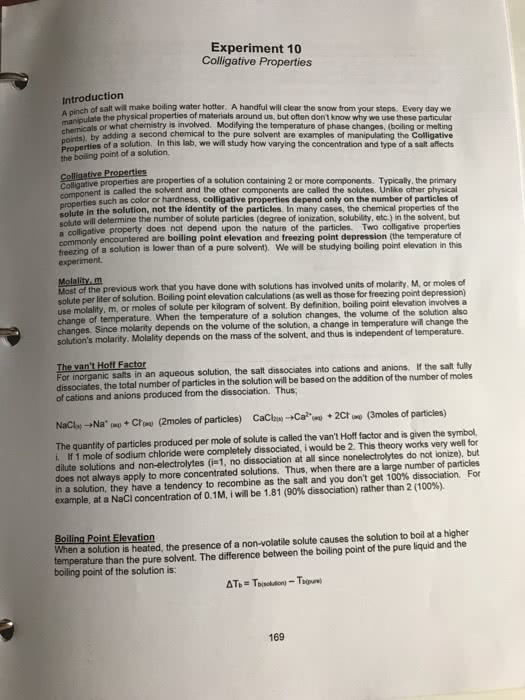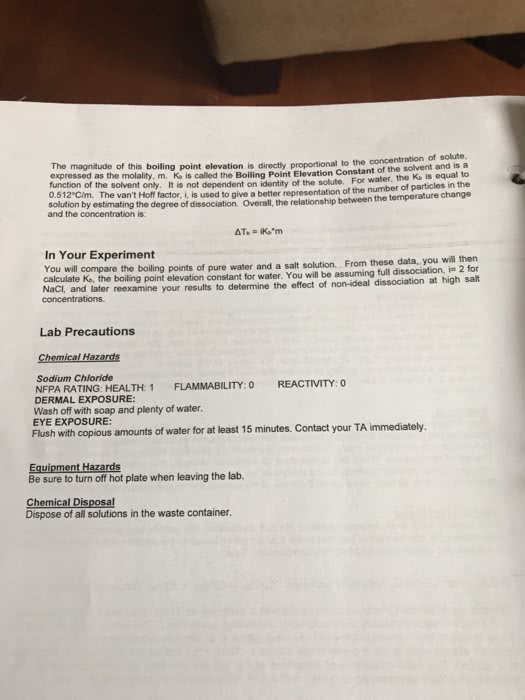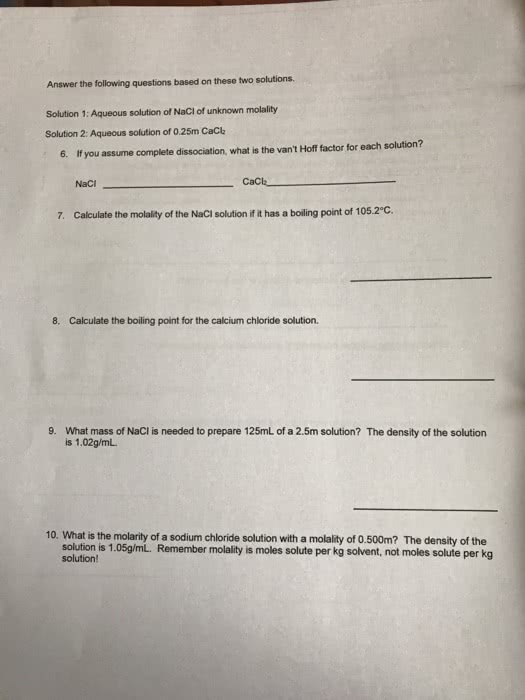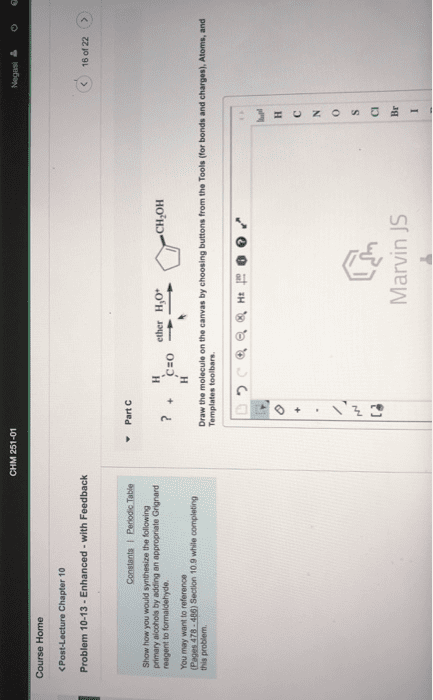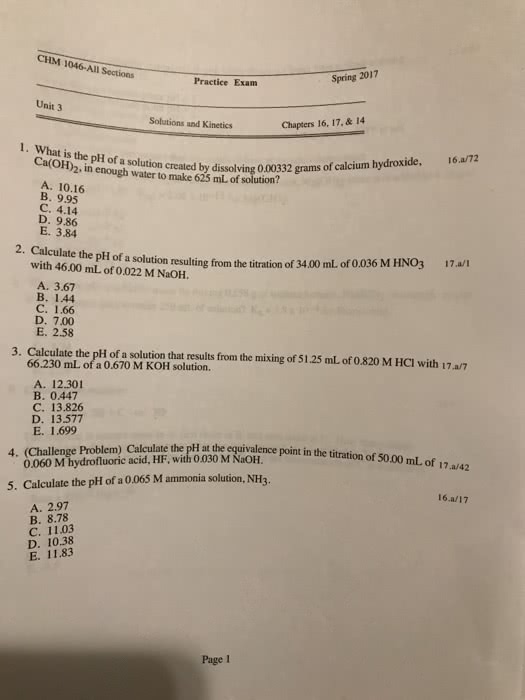CHM 1046 Lecture Notes - Lecture 5: Molality, Boiling Point, Boiling-Point Elevation
Document Summary
Nacl two ions number of particles = 2. Note: (cid:1005)(cid:1004)(cid:1004)% dissociated is assu(cid:373)ed u(cid:374)less give(cid:374) a va(cid:374)"t hoff factor. Colligative properties: vapor pressure of the solution, boiling point elevation, freezing point depression. The vapor pressure of a liquid is the pressure exerted by its vapor when the liquid and vapor states are in dynamic (meaning not static) equilibrium. The vapor pressure of a solution is given by the following equation: (cid:3046)(cid:3042)(cid:3048)(cid:3047)(cid:3042)(cid:3041)=(cid:4666)1 (cid:3046)(cid:3042)(cid:3048)(cid:3047)(cid:3032)(cid:4667)(cid:4666)(cid:3046)(cid:3042)(cid:3049)(cid:3032)(cid:3041)(cid:3047) Solutions with the least concentration of moles (smaller molarity) of solute will have highest vapor pressure value. (cid:4667) Solutions with the most concentration of moles of solvent (smaller molarity) will have the highest vapor pressure value. The vapor pressure of a solution is always lower than that of the pure solvent. The freezing point depression ( tf) is given by: (cid:3033)=(cid:3033) where kf = freezing point constant m = molality of the solution i = number of particles in the solution.


